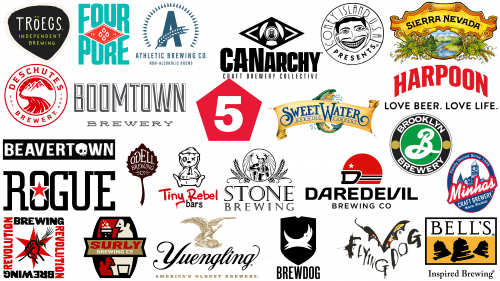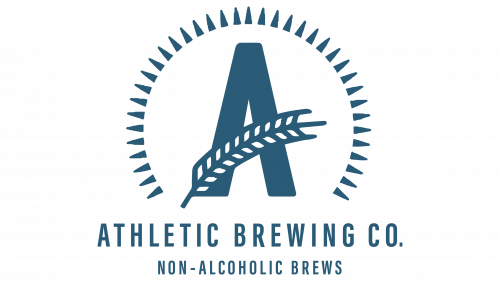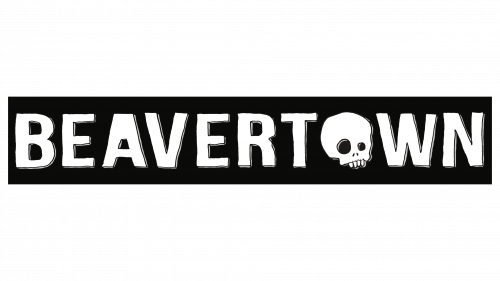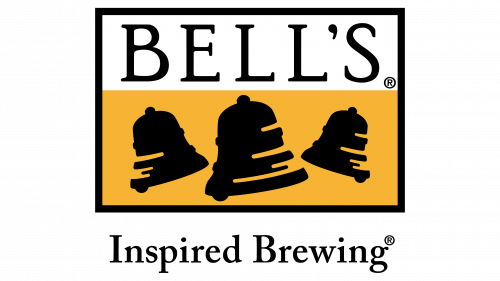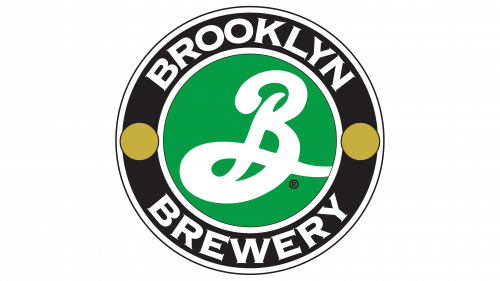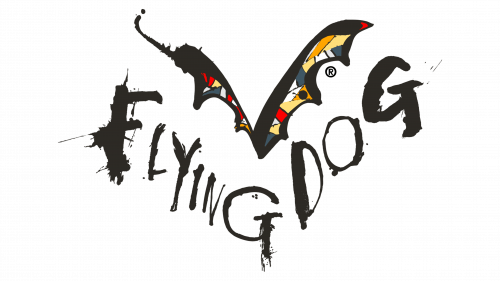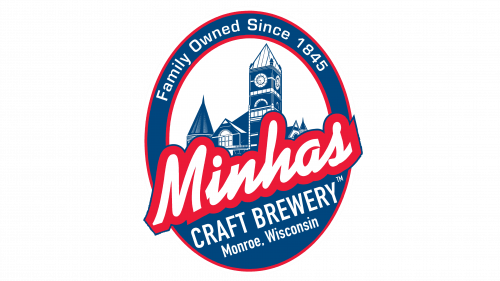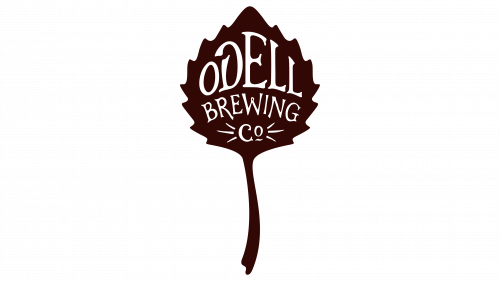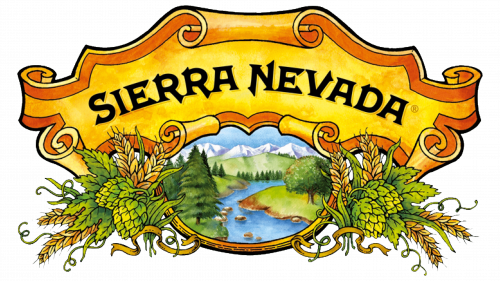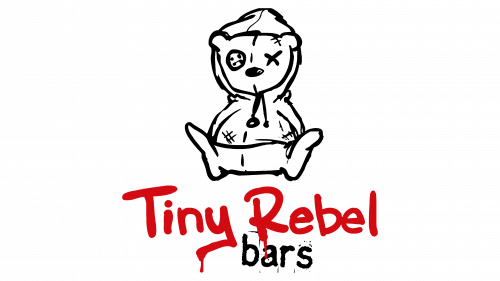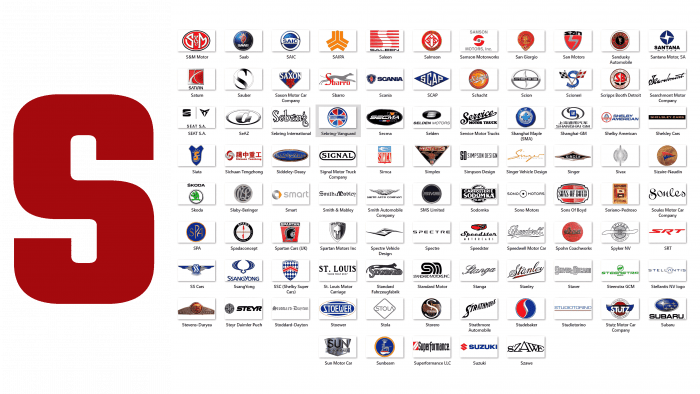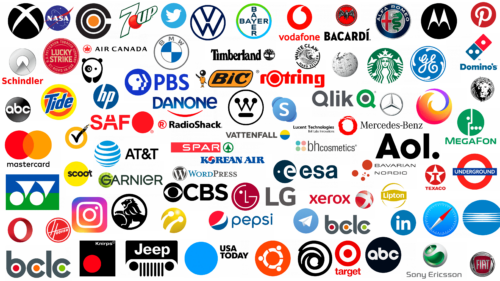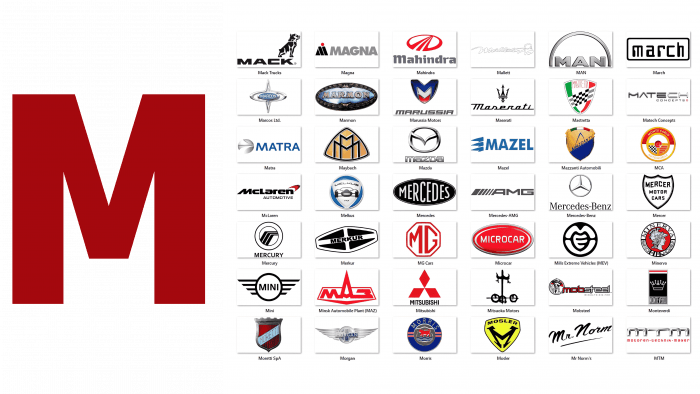The surge in demand for craft beer is noteworthy, especially as people are increasingly looking for unique beers. The market is projected to reach around $210.78 billion by 2028, mainly due to changing consumer tastes. Craft beer offers an intriguing and often craft alternative, unlike the mass-produced beers that dominate the world.
Craft breweries are uniquely positioned to emphasize specific brewing techniques, environmental stewardship, and other basic principles. One of the integral aspects of a craft beer brand’s identity is its logo. Such logos are usually inventive, quirky, and unusual, which attracts the attention of potential customers looking at supermarket counters. The graphic elements used by these organizations grab the attention of the audience.
These logos not only serve aesthetics but also embody the essence of the brand. Bold colors, intricate patterns, vibrant typography – each design element is chosen with care. This attention to detail reflects the same care with which each batch of beer is brewed.
The best craft beer logos in the world today
Craft beer companies are establishing a strong connection with their clientele, surpassing traditional breweries in terms of emotional engagement. With the changing preferences of new, younger consumers, these craft breweries are focusing on creating a strong brand identity. They strive to build a sense of loyalty and commitment among their followers.
Leaders in the craft beer industry provide compelling examples of effective brand development. From the rebellious aura around Brewdog to the eccentric innovations of Beavertown, these companies clearly demonstrate the power of unique branding. Each has successfully carved a niche for itself in the competitive world of beer by targeting different tastes and lifestyles.
For example, Brewdog uses anti-establishment sentiment to resonate with a segment of the population that values independence and counterculture. This approach has helped Brewdog to attract attention and build customer commitment. Similarly, Beavertown emphasizes uniqueness and creativity, often showcasing artistic can designs and original beer names that immediately grab consumers’ attention.
In a market saturated with diverse offerings, a strong brand identity is not just an accessory but a necessity. These craft beer companies understand this and implement comprehensive branding strategies. This planning touches every aspect of the business, from brewing to packaging to marketing campaigns. This attention to detail turns consumers into not just customers but loyal brand advocates. These loyal followers continue to buy the product and spread word-of-mouth recommendations, acting as brand ambassadors.
Athletic Brewing Company
Athletic Brewing Company, which has emerged as one of the key players in the non-alcoholic craft beer sector in the US, has gained notable recognition since its inception in 2018. With an exponential growth trajectory, the company’s sales have grown by approximately 500% in 2020.
The company’s recognition is not just limited to sales growth, it has also received critical acclaim. Numerous awards attest to the high quality of the soft drinks produced, which confirms its significant role in changing consumer expectations and market dynamics.
One important component of Athletic Brewing Company’s success is its skillful branding. A critical component of this process is the company’s logo, which was specifically designed to appeal to a young segment of health-conscious consumers who prefer non-alcoholic beverages. The logo design elements utilizing minimalist elements are effective and reflect the brand values. The letter “A” is surrounded by a shining sunbeam, evoking a sense of renewal and organic connection to the Earth. Complementing it is an elegantly draped barley leaf above the letter, implicitly emphasizing that the company uses natural and organic ingredients in its brewing process.
The company’s success is attributed to its strong branding, the quality of the products it offers, and its amazing ability to cater to changing consumer preferences. This combination of strengths puts Athletic Brewing Company in a unique position to remain a leader in the rapidly growing non-alcoholic craft beer sector in the United States.
Beavertown
Since its founding in 2011, Beavertown Brewery has quickly risen through the ranks to become a significant player on the global craft beer scene. Founded by Logan Plante, son of Robert Plante of Led Zeppelin, the brewery has garnered a lot of attention and a solid reputation, primarily for its IPAs. But the brewery doesn’t just limit itself to IPAs: it produces a variety of beers for different occasions, further cementing its position as an innovative force in the craft beer sector.
Beavertown’s expressive and eye-catching logo perfectly captures the essence of the brand. The combination of bright colors, quirky typography, and distinctive skull motif all make the logo stand out, easily attracting attention on supermarket shelves or in a crowded bar. It’s a visual identity that reflects the brand’s approach to beer making – fun, experimental, and memorable.
The brewery has put its name in the minds of craft beer lovers, becoming one of the most popular options for a growing number of connoisseurs. With a personality that meets today’s consumer demands for quality and originality, Beavertown has been able to carve out a significant niche in a competitive market.
Bell’s Brewery
Bell’s Brewery is both the oldest craft beer company in the state of Michigan and the oldest east of Colorado. Founded in 1985, as of 2021, the company has become the sixth-largest craft beer producer in the United States. This achievement is particularly noteworthy given the fierce competition and rapidly changing consumer preferences in the U.S. craft beer sector.
The company’s logo serves as a testament to its heritage. It depicts three bells in a minimalist design on a golden background, with the organization’s name above them. The slightly vintage nature of the graphics serves a dual purpose. First, it is a tribute to the brewery’s long history and reputation. Second, it contrasts with the modern and often flashier packaging of new red beer companies.
The choice of a gold background for the logo symbolizes quality and a standard of excellence, which is consistent with the reputation Bell’s Brewery has built over the years. The three bells symbolize the company’s unwavering principles: tradition, quality, and community.
Keeping pace with the younger generation of craft beer producers, Bell’s Brewery manages to evolve without straying far from its roots. It regularly updates its beer lineup to meet consumer trends while adhering to traditional brewing methods.
Bell’s Brewery’s product packaging is another area where old meets new. Although the logo evokes nostalgia, the packaging meets modern tastes. Bright colors, sleek lines, and eye-catching fonts appeal to a wide audience, from longtime fans to newcomers.
Boomtown Brewery
Boomtown Brewery is a prime example of a small craft beer operation that has effectively gained the attention and loyalty of a specific market segment. The brewery offers beers that seamlessly intertwine rustic and traditional brewing styles with modern elements, creating a unique beer experience.
The company’s ability to combine disparate elements is most evident in its logo. Here, visual cues work to embody the essence of the brand. The name “Boomtown” is typed in a bright, voluminous font that exudes modernity and assertiveness. In contrast, the “Brewery” font evokes a sense of nostalgia and old-world charm with a touch of Western aesthetic. The juxtaposition of these two design choices reflects the dual nature of the brewery’s offerings: paying homage to the past while at the same time supporting contemporary brewing trends.
This holistic design strategy serves several company goals at once. On the one hand, the modern and assertive design appeals to a young audience that often seeks innovation and something out of the ordinary. On the other hand, the classic, rustic part of the logo attracts the attention of those who are more focused on traditional brewing methods, craftsmanship, and the history of beer making.
Whether the ingredients are sourced, the techniques used in brewing, or the packaging chosen, the duality is constantly reinforced, making the brand versatile and dynamic. Each beer is a fluid testament to the company’s commitment to innovation that draws on tradition.
Brewdog
Since its founding in 2007, Brewdog has gained recognition as one of the leaders in the global craft beer industry. Founded to disrupt conventional notions of beer and corporate culture, the company has successfully carved out its own territory in the beverage market.
Known for its rebellious and bold spirit, Brewdog does not shy away from making bold branding choices. This fearlessness sets the company apart and resonates with consumers who appreciate non-conformity.
The Brewdog logo draws attention with its simplicity and intrigue. The design features a dog figure subtly resembling a crescent moon, making it both simple and memorable.
Brooklyn Brewery
Established to revitalize the brewing tradition in Brooklyn, a place once known for its beer production, Brooklyn Brewery has successfully expanded its reach over time. The company now offers a wide range of beverages to suit a variety of tastes and has expanded into international markets.
Not limited to local distribution, the company ships its beer to many global destinations, making it a recognizable name on every continent in the craft beer segment. This international distribution not only increases brand recognition but also allows for a broader appreciation of the flavors of the beers offered by the brewery.
Brooklyn Brewery’s visual branding is as remarkable as its product lineup. The brand’s logo is simple and memorable, aiming to touch a wide range of consumers. The stylized “B” featured on the logo is inspired by the fizzy foam swirl that crowns a glass of fresh beer. This design choice is a nod to the craft of brewers, subtly capturing the essence of the beverage while paying homage to the company’s roots. It reflects Brooklyn’s rich history of beer making, as well as the craft and attention to detail in modern brewing.
CANarchy
Founded in 2015, CANarchy began its mission under the leadership of a group of brewers united by a common passion: to redefine the American beer scene through unique flavors and brewing techniques. Since its inception, the company has left an indelible mark on the craft beer industry, becoming the sixth-largest producer in its category in the United States. The company operates under the umbrella of Monster Beverage Company, which expands its market reach and capabilities.
CANarchy’s logo is a well-tuned combination of form and function. It highlights a striking word mark that is neither overly complex nor overly simplistic. This sign is accompanied by a diamond-shaped symbol with the letter “A” in the center.
This letter “A” is not just a random choice of the alphabet. It is carefully designed and serves several purposes at once. First, it echoes the CANarchy name, visually cementing the brand’s identity. Second, and perhaps more intriguingly, the center of the “A” depicts an overhead view of an open can of beer. This design choice leaves little room for doubt that the company is focused on producing extraordinary beer and serving it in a can.
Going beyond producing quality beer, CANarchy is also committed to making a visual statement. The logo, with its thoughtful elements, contributes to just that. It combines aesthetic appeal and subtle symbolism, embodying the brand’s mission to innovate and its focus on canned beer production.
Coney Island
Established in 2007, Coney Island Brewing Company set a record for the scale of its small production, initially operating out of a Freakatorium space on Coney Island. At first, its production capabilities were very limited, producing only about one gallon of beer per brew cycle. The brewery is now under the umbrella of the Boston Beer Company, which in a crowded market has its advantages and challenges.
The logo graphic incorporates elements that immediately bring to mind Coney Island, utilizing a combination of geometric shapes and retro tones. The design serves a dual purpose: it’s not only branding but also a nod to the nostalgia that many people associate with Coney Island.
Working in a unique “meatball” setting early on provided the brewery with an unconventional and eye-catching story. This background gives the brand an authenticity and personality that makes it appealing in a market saturated with one-size-fits-all offerings. This humble, albeit intriguing, beginning is a stark contrast to the current scale of production, which now draws on the resources of a much larger parent company, Boston Beer Company.
Under new leadership, Coney Island Brewing Company has the opportunity to greatly expand its sphere of influence. With the extensive distribution networks and resources of Boston Beer Company, Coney Island Brewing Company can make a national and international name for itself.
Daredevil Brewing
Established as an “aggressively fun” craft beer organization, Daredevil Brewing has carved out a niche for itself in Indiana by offering a range of IPAs and other specialty brews. Despite a smaller scale than some competitors, the brand has gained an ardent following over the years, which attests to its relevance and influence in the marketplace.
The branding uses brightly colored cans and eye-catching artistic packaging. This combination of product and packaging effectively communicates the essence of the brand to the target audience.
But what really captures the brand’s character is its emblem – the motorcycle helmet. This iconic image doesn’t just adorn the brand’s name but embodies the whole ‘daredevil’ ethic the company wants to convey. This is further emphasized by the clever design of the helmet’s visor. With its “D” shape, it complements the brand name and brings additional layers of meaning to its visual identity.
With this innovative branding strategy, Daredevil Brewing invites consumers to participate in a unique experience that begins the moment they see the can. All of these elements have combined to make Daredevil Brewing one of the leading craft beer companies in the United States.
Deschutes Brewery
Founded in 1988 in Bend, Oregon, Deschutes Brewery has gained recognition as a brewery with signature brews such as Mirror Pond Pale Ale. Over the years, the company has grown into one of the leaders in the American craft beer market, and today, its products are delivered to consumers in 28 states across the country.
The company’s logo plays a key role in brand identity and recognition. The logo serves as a symbol and storytelling tool, utilizing geographic imagery that points to the company’s Oregon roots. The symbolic imagery immediately connects with the area from which the brewery originated, emphasizing the importance of origin in the craft beer community.
Typography further enhances the effectiveness of the logo. The use of bold serif letters in the icon design speaks to sophistication and timelessness, qualities that resonate with consumers who value prestige when choosing a beer. These strong textural elements give the brand seriousness and relevance, further distinguishing it in a saturated marketplace.
Deschutes Brewery’s rapid growth from a local brewpub to a world-renowned brand has not just been about high-quality beer. It’s about a holistic approach to business, where logo, branding, and product quality play an integral role.
Five Points
Five Points Brewing Company in East London has become one of the leading craft beer producers in the UK. What makes this brand special is the combination of minimalistic packaging and an intriguing variety of drinks that has won over a wide audience. This approach sets the company apart in the UK’s vibrant craft beer scene.
A unique aspect of the company’s branding is the adaptive nature of its logo. The core element – a pentagram with five dots – is always present but is presented in different variations in different products. Around this central figure is a circular emblem, which further enhances the visual appeal of the design.
This simple but effective design sets the company apart from its peers and resonates with consumers. It subtly reflects the brand’s ethos of simplicity, complemented by a diverse range of quality drinks.
The packaging plays an important role in communicating the brand’s identity while remaining true to its minimalist aesthetic. This minimalism paradoxically serves as a powerful differentiating factor in a market often flooded with elaborate and flashy designs. This branding strategy has allowed Five Points Brewing Company to become a well-known brand in the UK beer community.
Flying Dog Brewery
Debuting in 1990, Flying Dog Brewery quickly rose to the top of the craft brewing industry, achieving tremendous success in just a few years. As one of the pioneers in the Rocky Mountain region in distributing craft beer through brew pubs, the brand quickly gained favor with consumers and solidified its presence in the market.
This rapid ascent was not only due to the high quality of the beer; the brand’s unique personality also played an important role. One look at the Flying Dog Brewery logo gives an idea of that uniqueness. Unlike many traditional logos, the imagery used in it defies easy categorization due to its abstract and artistic elements.
The fuzzy, fluid shapes of the visual elements work in tandem with the brand name, represented by a handwritten font that looks almost disordered. The font choice isn’t just a stylistic choice, and it’s another layer in the branding tapestry. Following the natural curves of the abstract art above, the text seems to sway in motion. This illusion adds to the dynamism, evoking a sense of fluidity and mobility that complements the company’s unconventional approach to craft brewing.
Four Pure
Four Pure Brewing Company has become one of the key players in the craft beer sector in the UK. A distinctive feature of this organization is a diverse and inventive range of drinks. Another distinguishing feature is the bright, eye-catching packaging that immediately attracts attention.
By limiting the ingredient list to just four elements, the company adheres to the basic principle that less is more when creating quality craft beer. This straightforward brewing philosophy is the opposite of the complex and varied ingredient lists often found in other craft beers and provides a new perspective on the industry.
Four Pure Brewing Company’s logo serves as a visual testament to this simplicity. Not only does it contain the brand name, but it also includes four droplets in the center of the graphic. These droplets symbolize the four main ingredients used in the brewing process and serve as a constant reminder that the brand strives for simplicity.
This simplicity extends to other elements of the brand’s presentation. Colorful packaging that is bright and eye-catching avoids unnecessary complexity and focuses on what’s important – the quality of the beer inside. Even the names of the different drink variants are kept simple, often describing the flavor profile or key ingredients, further emphasizing the straightforwardness of the brand.
Harpoon Brewing
In 1986, Harpoon Brewery became one of the first businesses to receive a liquor license in the state of Massachusetts. This event marked the beginning of the creation of a highly reputable brand, with India Pale Ale as its main distinction. Over time, this staple variety has amassed an impressive number of awards, cementing its reputation as a leader in the craft beer sector.
Not resting on its laurels, Harpoon Brewery took deliberate steps to diversify its beverage lineup. Seasonal beverages emerged, each with a unique combination of flavors and aromas, adding depth to the brand’s product portfolio. The brand has further expanded its product portfolio by initiating craft beer festivals that have captured the attention of the public.
The most important aspect of Harpoon Brewery’s brand identity is its logo, which is a clever blend of modern and vintage elements. The logo not only serves as a visual identifier but also tells a story about the brand itself. The prominent company name is elegantly combined with an archaic image of a harpoon, the tool that gave the brewery its name. The use of the traditional harpoon in the logo has a symbolic meaning, signifying respect for long-standing brewing techniques and the company’s commitment to being an innovator in today’s craft beer market.
Minhas Craft Brewery
Minhas Craft Brewery, founded in 1845, is the most time-honored brewery in the Midwest and the second most visited in the United States. Its remarkable resilience is evidenced by the fact that it has been able to survive monumental periods of history, particularly the Great Depression.
Minhas Craft Brewery’s visual identity is based on a logo that pays homage to its long and rich history. The emblem incorporates elements that point to the city of Monroe, Wisconsin, the cradle of the company’s existence.
The logo embodies the company’s age and heritage, reflecting its founding date and complemented by the words “Brewing Excellence Since 1845.” This tagline reflects the company’s unwavering commitment to quality and tradition, serving as a brand narrative linking its past accomplishments to its current market presence.
Historical depth and an unwavering commitment to quality have positioned Minhas Craft Brewery in a unique position in the ever-evolving craft beer market. The company’s ability to stand the test of time and adapt to new eras while maintaining its core values sets it apart in a competitive and often volatile industry.
Odell Brewing
Originally focused on the production of draft microbrews, Odell Brewing Company has become an attention-grabbing brand in liquor stores in a variety of markets. What sets the brand apart is not only the extensive range of uniquely flavored beverages but also the artistry of the packaging. The packaging, which is often a riot of colors and intricate drawings, is an aesthetic embodiment of the quality inherent in it.
Odell Brewing Company’s distinctiveness is not limited to the liquid produced. The brand takes a design approach to packaging, going beyond functionality and visual appeal. Intricate images can often be found on cans and bottles, encompassing a color palette that draws the eye and stirs the imagination. This artistic dedication makes each Odell product not just a beverage but a work of art.
The Odell Brewing Company logo emphasizes this combination of quality and artistic expression. The logo, reminiscent of a beer bottle cap, includes a hop leaf in the center, a reference to the main ingredient in many popular beers. This design element is far from trivial: it speaks of craft, dedication, and the celebration of key ingredients. The hop leaf serves as a symbol that captures the essence of the brand, uniting tradition and innovation in the ever-evolving craft beer market.
The images on the emblem are more than just decoration, and they are a symbolic narrative that makes the company’s focus on quality ingredients easily recognizable. The centerpiece of the emblem, the hop leaf, directly references the most important quality raw material for beer production. It embodies the attention to detail and dedication to craft that Odell Brewing Company infuses each batch of its signature beer with.
Revolution Brewing
Revolution Brewing began its journey in 2010 as a brewpub in Chicago, Illinois. As time passed and demand grew, the business expanded into a separate production brewery, allowing them to create a wide range of beers. Among them, the Anti-Hero IPA stands out.
The brand’s emblem is rife with symbolic nuances, which is akin to modern, disruptive craft beer names. The logo uses a rough font, emphasized by an eye-catching image of a hand clutching a plant against a six-pointed star. Such designs, particularly the use of fists and stars, are usually associated with ideas of anarchism.
While the logo gives the brand an appealing visual identity, its true significance lies in the fact that it embodies Revolution Brewing’s rebellious spirit and ethics. The clenched fist clutching the plant is an indirect affirmation of the brand’s commitment to quality, potentially natural ingredients. The six-pointed star, an element filled with possible meaning, adds another level of depth to the brand identity, further engaging consumers.
Revolution Brewing’s wide range of beverages caters to a variety of taste preferences. The company maintains a dynamic product mix – from time-tested staples to new, innovative brews – that engages consumers and keeps them coming back for more. Whether it’s the hoppy notes of an IPA or the smooth, rich flavor of a stout, the brand offers products to suit every taste.
Rogue Ales
Emerging in the craft beer sector in 1988, Rogue Ales has a distinctive character that is partly due to the fact that it was created by a group of Nike executives. It’s not just a brewery – it controls every element of the production process. From distilling spirits to growing ingredients to making barrels, Rogue Ales epitomizes vertical integration in the beverage industry.
The diversity and quality of the product is a testament to this comprehensive approach. By growing its own ingredients, the company ensures quality and consistency that is difficult to achieve otherwise. Being self-sufficient in raw materials gives Rogue Ales an unprecedented advantage, allowing for the customization of flavors and experimentation, breaking the boundaries of traditional craft beer production.
Rogue Ales features a logo that subtly but effectively communicates the essence of the brand. The font used in the logo references a style commonly associated with movies in the western genre. This choice is intriguing and makes consumers associate the brand with a frontier spirit, independence, and courage. And the bright red star inside the letter “O”? Far from a mere decoration, it’s a bright focal point that commands attention and emphasizes the brand’s desire to stand out.
Sierra Nevada Brewing
Founded in 1980, Sierra Nevada has cemented its reputation as a leader in the American craft beer market, but its operations extend beyond brewing. The brand has a significant share of the U.S. market and is often among the top-selling craft beer brands. The company has diversified its product lineup but has maintained a consistent focus on the quality of its core line of beers.
A hallmark of the brand was winning the Green Business of the Year award in 2010. This award emphasizes the brand’s commitment to environmentally responsible practices, which resonates with a certain segment of craft beer drinkers. The brand seamlessly blends quality and sustainability to create an attractive offering for a wide range of consumers.
The visual elements of the Sierra Nevada brand convey both traditional and innovative aspects. Immediately striking is the logo – a golden yellow banner with the company’s name. The choice of this color is far from coincidental; it denotes qualities such as richness and warmth that are often associated with high-quality craft beer.
Below the text elements of the logo is an intricate illustration surrounded by hops and barley. This illustration evokes a sense of place and authenticity and links the brand to the natural elements integral to brewing.
Stone Brewing
Founded in 1996 with the goal of producing a single pale ale, Stone Brewing has grown from a modest operation to become the largest brewery in California and one of the top ten craft beer companies in the United States. Starting small, the company has steadily increased its market share and diversified its product lineup. Pale ales, which were once the only item in their catalog, now have a place in a wide range of craft beer and other alcoholic beverages.
Recognized worldwide for their brewing prowess, Stone Brewing offers beer lovers many options. Whether it’s a strong stout or a refreshing lager, the range caters to a variety of tastes and preferences, making Stone Brewing a renowned brand of quality and variety.
The company logo combines visually appealing design components, reinforcing the brand identity. The logo combines a powerful text element with an original and distinctive emblem. The emblem is eye-catching – a cheerful demon savoring a pint of beer. This vivid image is not just a piece of jewelry but a dynamic symbol that embodies the brand’s combination of boldness, quality, and rebelliousness.
Surly Brewing
Emerging in 2005, Surly Brewing Company marked its entry into the American craft brewing scene by emphasizing canned beer over traditional bottled beer. This choice of packaging immediately set the company apart from others, attracting the attention of beer lovers across America. The founder’s roots in home brewing provided a strong foundation that enriched the company’s approach to beer creation.
The Surly Brewing Company logo is thought-provoking and reflects the brand’s ethos. The upper part of the logo, divided into two parts by a ribbon of wordmark, depicts a somber man holding an empty glass. In contrast, the bottom part depicts a more cheerful man whose glass is filled with beer.
Over the years, the company has carved out a significant niche in an increasingly saturated market. The company has won over a wide and diverse consumer audience by offering a variety of beer styles, from hoppy IPAs to full-bodied stouts. The emphasis on canned beer isn’t just a novelty, it has many practical purposes. For those who want to take beer with them on the road, cans are a convenient transportation option. This packaging solution fully meets the demands of modern life, offering convenience without sacrificing quality. In addition, cans are often seen as a greener alternative to glass bottles, making them popular with environmentally conscious consumers.
Surly Brewing Company consistently receives high marks for its ingenuity in brewing techniques and flavor profiles. This unwavering commitment to innovation and quality has been crucial in building the company’s reputation for exceptional beer. The company frequently solicits consumer feedback to refine existing recipes and inspire new ones. Through various marketing channels and word of mouth, Surly has gained widespread popularity, becoming a brand recognized not only for the quality of its products but also for embodying a distinct type of American craft beer culture.
Sweetwater Brewing
Founded in 1997, Sweetwater Brewing Company has carved out a niche for itself in the craft brewing industry by offering unpasteurized brews that differentiate it from the competition. Emerging from the free-spirited environment of Sweetwater Creek, a place one of the company’s founders often visited on kayaking trips, the company adopted a name that reflects its ethos.
The original tagline, “Don’t float the mainstream,” further emphasizes the brand’s commitment to marching to the beat of its own drum. This sentiment has organically translated into the brand’s visual identity. In the company’s logo, the fish, an animal that often symbolizes freedom and fluidity, is prominently featured behind a traditional-style word banner.
While these design elements may seem somewhat old-fashioned at first glance, they effectively reflect the brand’s philosophy. This unique blend of old and new, traditional and modern, has been a key element that has helped Sweetwater Brewing Company become one of the most recognized craft beer distributors in the United States.
Tiny Rebel
Founded in 2012 in Newport, Wales, Tiny Rebel is one of the UK’s leading craft beer producers. The company is primarily known for its signature brews such as ‘Cwtch,’ which means ‘Cuddle’ in Welsh. The brand offers a variety of beer flavors and seasonal offerings that can be found all year round.
Tiny Rebel’s visual identity, presented in the form of an emblem, speaks to the brand’s character. The emblem features a teddy bear mascot dressed in a hooded jacket and graffiti-like text. This creative approach is designed to resonate with young consumers who are just beginning to discover the pleasures of craft beer.
The teddy bear motif is not just an aesthetic choice, it embodies the company’s youthful and rebellious spirit. The informal and playful elements of the logo design fit well with the company’s mission to produce quality beverages that stand out in the craft beer market. The graffiti-style text further emphasizes the originality that distinguishes the brand from its competitors.
With a wide range of flavors and seasonal options, Tiny Rebel caters to a variety of consumer preferences and maintains an interesting assortment throughout the year.
Tröegs
Tröegs, founded in 1996 in Pennsylvania, operates as a craft and microbrewery, earning a reputation that has propelled it to the top-selling craft beers in the United States. That said, the brand is not limited to domestic markets: it enjoys widespread international popularity, with loyal customers on many continents.
The Tröegs logo takes a minimalist yet impactful approach. The logo uses a clean sans-serif font contrasted with a black triangular background. This simple design cuts through the noise and makes the logo instantly recognizable and memorable, thus reinforcing the brand’s modern aesthetic.
The font choice for the logo brings a sense of whimsy and playfulness, which aligns well with the brand’s ethos of independence and quirkiness. This careful stylistic choice emphasizes the uniqueness of the brewery and suggests that while Tröegs takes the quality of its beer seriously, it is not shy about showcasing its unconventional personality. Over the years, the brand has solidified its position as a beverage supplier and one of the premier producers of American craft beer.
Yuengling & Son
Since 1829, Yuengling & Son has held an unprecedented position as the oldest and most dominant force in the American craft beer scene. The company’s long tenure allows it to maintain its historical relevance and be the top-selling brewery in the United States by sales volume.
While many modern brands choose a minimalistic approach to design, Yuengling & Son harkens back to the past by creating an intricate logo with traditional motifs. The design features a typeface that immediately references a time when craftsmanship and attention to detail were paramount. The carefully chosen typography references a bygone era, showing that this brand has both roots and wings.
In addition to the typography, the logo incorporates intricate graphic elements that further distinguish the brand. A carefully illustrated eagle towers over a keg of beer in a regal pose. This image is deeply symbiotic and serves several purposes at once. The eagle, which is the national emblem of the United States, signifies that the brand carries the weight of tradition and the promise of quality imbued with American values. A keg of beer under the eagle is a clear signal to the market that the brand’s core offering is premium craft beer.
Celebrating the top craft brewery logos
The American craft beer industry has changed significantly over the past few years, driven by a growing demand for distinctive ales and craft brews. An attractive aspect of these changes is the eclectic design of brewery logos, each carefully crafted to reflect the brand’s personality or history. A well-executed logo serves as a visual introduction to the essence of the brewery, which is a critical factor in a marketplace teeming with choices.
Many well-known craft beer brands go out of their way to incorporate history or locale into their logos. For example, a brewery located in a mountainous region may use harsh alpine elements to relate to local culture and geography. Conversely, a brand with deep historical roots may opt for classic motifs that convey a commitment to centuries-old brewing techniques.
There are also those brands that deviate from the traditional path by choosing emotional or subversive visual elements. This approach aims to appeal to consumers with a penchant for unconventional or egregious styles. Such logos often utilize vivid, resonant imagery or concepts that directly tap into underlying emotions or cultural nuances, which helps build brand loyalty.
The art of connecting with the target audience is something these craft beer brands have mastered. A compelling logo can tell a story, evoke emotional engagement, or provide insight into the philosophy behind the brand. In some cases, these logos gain notoriety across geographic boundaries and become cultural symbols in their own right.
This variety of logos emphasizes brands’ creative flair and understanding of market dynamics. This connection, often made through visual style, plays a crucial role in distinguishing craft beer as not just a beverage but as the embodiment of a particular lifestyle or set of values.
